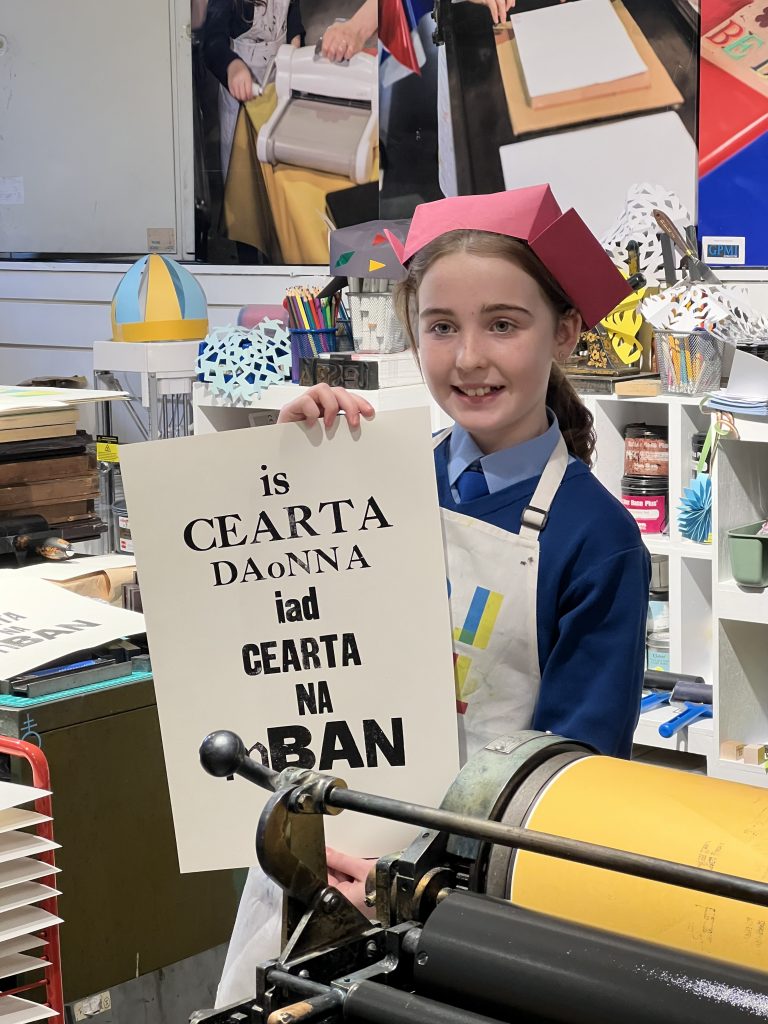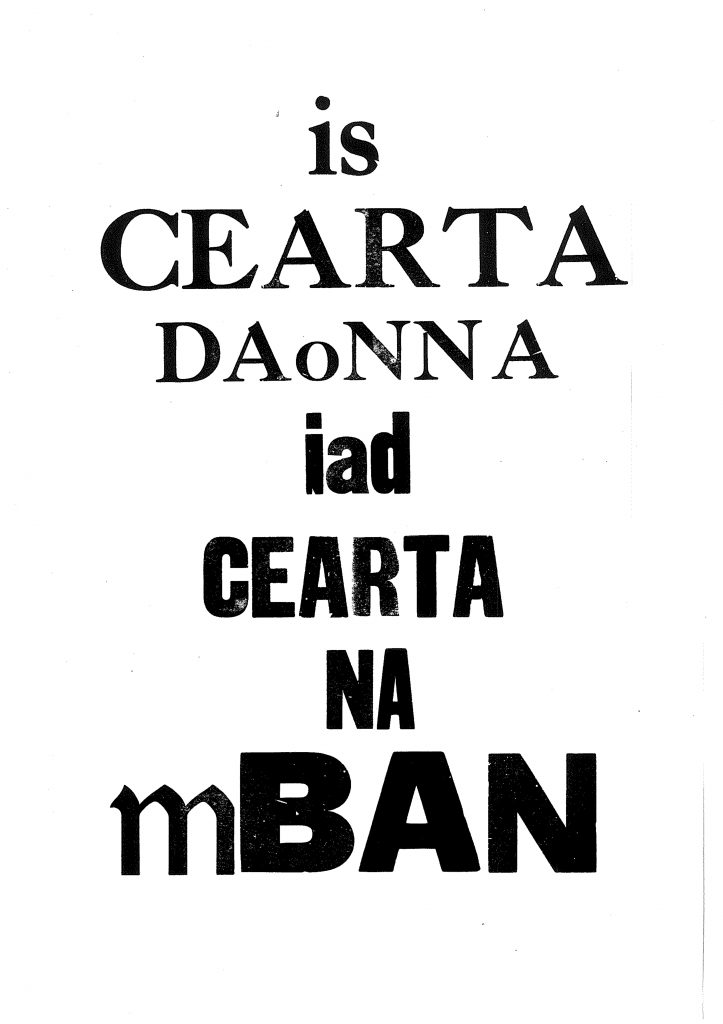Women and the 1920s Elections

On the 8th of December, students from Gaelscoil Cois Feabhail, Ballnally, County Donegal attended the National Print Museum in Dublin, to participate in the final Mná100 letterpress printing workshop.
In preparation for this workshop, the primary school students had been studying elections held in Ireland from 1921 to 1923. They focused on the General Elections, and the women who stood for election for Dáil Eireann. They also looked at Universal Suffrage in preparation for the workshop.
The students were greeted by National Print Museum Education Officer and Printer Mary Plunkett, who welcomed them to the museum and introduced them to letterpress printing.

One of the students read this brief history of women involved in the elections to help everyone get started on their slogans that they would like to print.
In 1918 women could vote if they had a property qualification, were over the age of 30 or were university educated. Constance de Markievicz was the only woman elected in the 1918 General Election. Ireland was still under British rule. In that election she became the first woman in the House of Commons. She was fighting for Ireland to have its own parliament, she refused to take her seat. She became Secretary for Labour (a cabinet minister) in the first Dáil Éireann. The first meeting was in 1919, during the war of independence. The Dáil became illegal, and the government was underground, she did her work in secret offices and traveled in disguise.
When the Irish Free State was established with its own constitution in 1922. Ireland became a leading country in the world when it granted Universal Franchise allowing all women and men, aged 21 to vote, many countries didn’t bring in this law until much later.
In the five years since 1918 there had been four different sittings of Dáil Éireann. Nine women were elected:
- Constance de Markievicz
- Kathleen Clarke née Daly
- Dr Ada English
- Mary MacSwiney
- Kate O’Callaghan née Murphy
- Margaret Pearse née Brady
- Caitlín Brugha née Kingston
- Margaret Collins-O’Driscoll
- Dr Kathleen Lynn
Mary MacSwiney and Kate O’Callaghan were elected to both the 2nd and 3rd Dáil Éireann.
Not all these women took their seats in the 4th Dáil Éireann because it was the time of the Civil War. Mary MacSwiney, Caitlín Brugha (she was the widow of Cathal Brugha, who had been killed in the fighting in the battle of Dublin in 1922) Dr Kathleen Lynn, (one of the co-founders of St Ultan’s Children’s Hospital) and Constance de Markievicz all refused to enter Dáil Éireann.
The only woman who took her seat was Michael Collin’s sister, Maggie, she would serve in Dáil Éireann as the sole women from 1923 until 1933. Kathleen Clarke, widow of the 1916 Leader, Tom Clarke was elected in 1927 but did not take her seat. Cáitlin Brugha was also elected and did not take her seat as she opposed the Irish Free State. Constance de Markievicz also remained outside the Dáil. She was ill when she was elected and died on 15 July 1927.
The students then had the task of finalizing the wording for their posters.



Once the students had set their type with the font and style that they liked, it was time to head over to printing press to produce their election posters.



The final posters from the groups. As Gaelscoil Cois Feabhail is an Irish speaking school they decided to print some of their posters in Irish and English. Some groups used both languages to get their messages across.




Mná100 would like to thank everyone at the National Print Museum who assisted with the printing workshops and for being such wonderful hosts. Mná100 would also like to thank all four of the schools and students who created some amazing election posters over the past two years. We wish them all the best with their future studies.